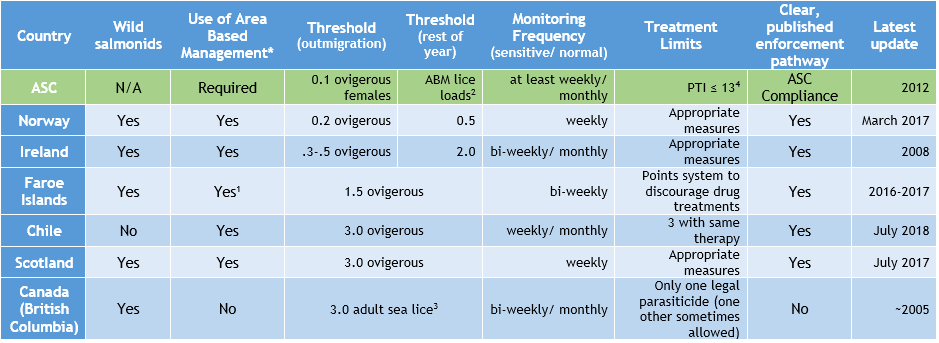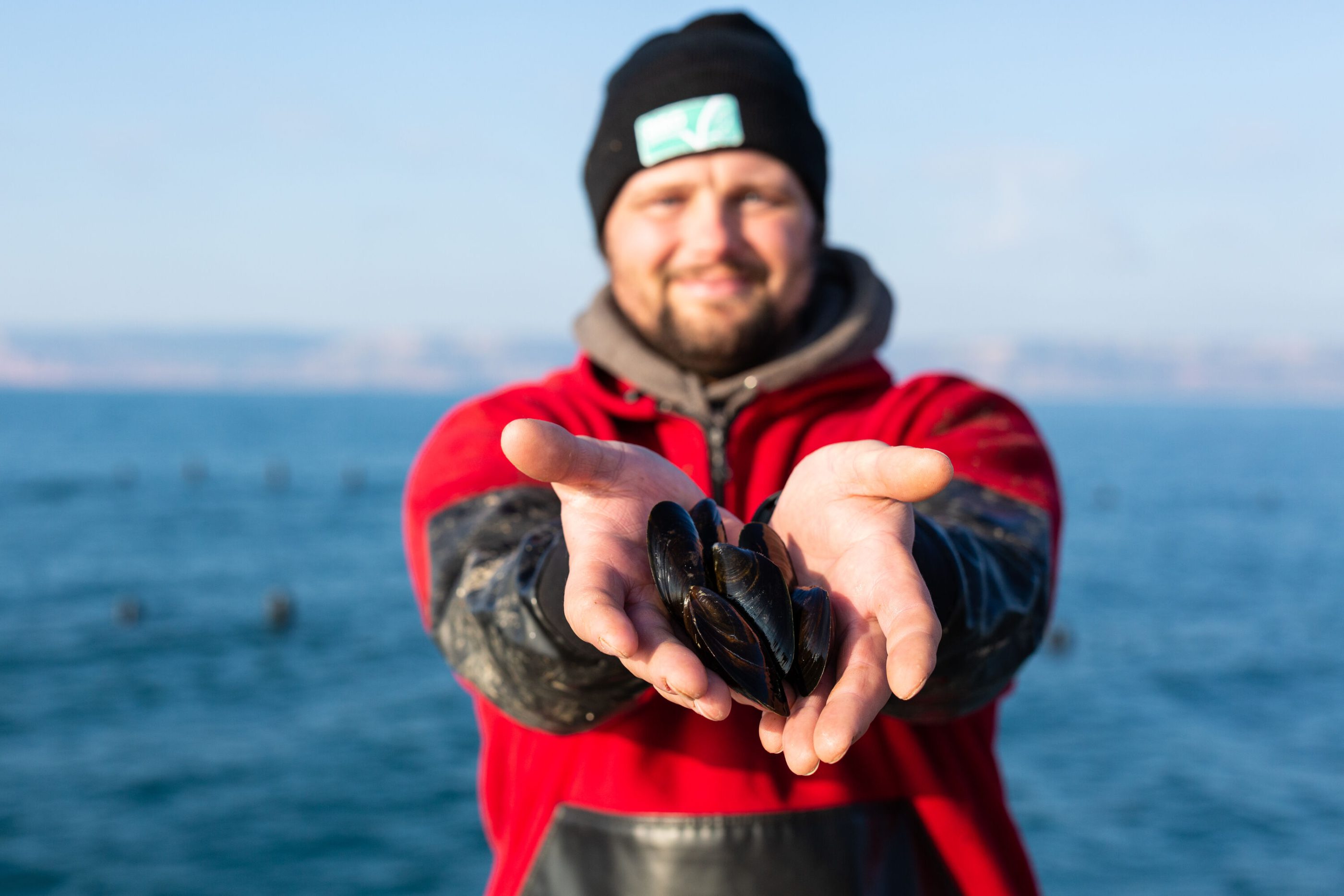The current state of sea lice management
April 25, 2019
By Ron Tardiff, Science and Standards Intern
In order for ASC to determine whether to revise sea lice management indicators in the Salmon Standard, it is helpful to have an understanding of the baseline requirements in each salmon producing country and then reflect on the current ASC requirements to assess if a revision is needed.
I conducted a review of each country’s legislation, regulations, guidance documents and other sources, and summarised my findings in the table below. As you can see, most countries base their sea lice threshold on the number of ‘ovigerous’ – in other words, egg-bearing – females. I’ve also included whether the country requires the use of Area Based Management (ABM) – this is a key part of the ASC Salmon Standard, and requires cooperation of the majority of farms in a wider area to monitor and mitigate risks relating to issues including parasites, pathogens and biodiversity.

1. The Faroe Islands only allows one company to operate farms in a single fjord.
2. The ASC Salmon Standard_v1.1 Requirement 3.1.3 requires the calculation of a maximum lice load for an ABM, which is generally calculated as the maximum allowable under national regulation multiplied by the number of fish in an ABM.
3. This is comparable to approximately .5 ovigerous sea lice.
4. See ASC Salmon Standard_v1.1 Appendix VII for details. The Parasitic Treatment Index serves to limit the amount of parasiticides used. Each treatment a farm makes receives a score calculated based on the therapy’s toxicity, persistence and dosage; the method of treatment; the number of times the same therapy is used; and the timing (relative to lobsters). A farm’s PTI is the sum of all it’s PTI scores.
What has become clear through the course of this review is that the science of sea lice interactions with wild salmon remains contentious (Marty et al. 2010, Jackson et al. 2011). In addition, after reviewing the available literature on sea lice, reaching out to experts, and contacting government agencies, I have thus far been unable to identify how or why regulators have chosen their sea lice thresholds. In short, it seems each country uses their own approach when it comes to establishing industry’s sea lice averages and required treatment options. The above table demonstrates that, with some exceptions, countries with wild salmon populations tend towards more stringent requirements.
Once sea lice thresholds have been exceeded, treatment of some form is required. Most countries also use “strategic treatments” at the end of the winter (before warmer spring temperatures arrive and wild salmon runs begin). There are a number of available treatment options and they can be divided into four categories:
- Management & Prevention
- Chemical
- Mechanical
- Biological control
The first category of treatment regards the overall responsible management of individual farms as well as coordination between farms in the same water body. The most important preventative measures are the use of fallowing, the stocking of single year classes in a single site, synchronised production time scales, and synchronised treatment timing. Other methods include the use of sea lice barriers, snorkel cages, and siting farms near natural sources of fresh water runoff (i.e. glacial runoff in Chile). These strategies are nearly universally applied in salmon farming countries.
Medical treatments refer to the use of drugs – primarily parasiticides, but also chemicals like hydrogen peroxide. In all salmon producing countries, these drugs (and their usage) is strictly controlled, requires veterinarian approval, and may be subject to limited time windows or treatment numbers. The rise of resistance to many common parasiticides continues to push the industry towards more inventive treatment ideas.
The main mechanical treatments include the use of warm water (thermolicer) and freshwater baths (hydrolicer). These, however, involve a lot of handling and can be stressful for fish. More recent and innovative approaches include the use of laser-shooting robots (not a joke) and ultrasonic waves.
Finally, and perhaps the single most impactful technique thus far, is the employment of millions of cleaner fish like ballan wrasse and lumpfish to eat lice off of salmon. While this method has proven very successful and significantly reduces the need for chemical therapies, there remain major concerns over cleaner fish welfare conditions and the increased pressure on wild stocks of cleaner fish, particularly ballan wrasse.
Salmon farming countries have made the prudent decision to allow farmers to choose which methodologies they employ to maintain required sea Iice levels and ASC has followed their lead. Our research suggests that strict legislation on outcomes but flexibility regarding solutions continues to drive innovation in combating sea lice.
Our goal in undertaking this review is to set a responsible, measurable, and attainable standard for sea lice in line with available science and industry best practice. The results of our legislative and regulatory analysis show that the ASC’s Salmon Standard already demands significantly more effort from farms to manage sea lice than most national requirements. However, sea lice still remain a challenge for ASC’s producers and resistance continues to develop in salmon producing regions. With all of this information now in hand, we can now ask what changes should be made to ensure ASC certified salmon producers pose a minimal sea lice infection threat to wild salmon?
This is Ron’s second blog detailing his work on sea lice. Read his first blog here.



